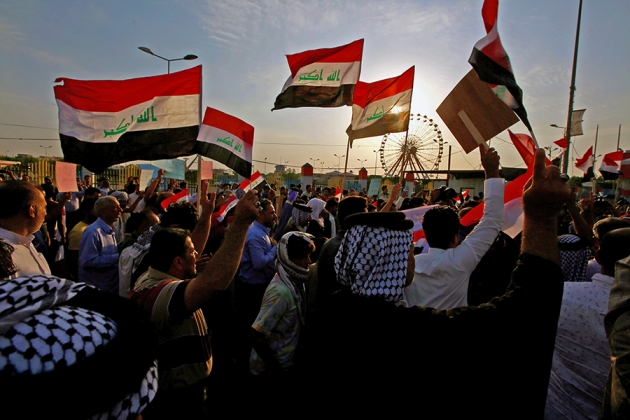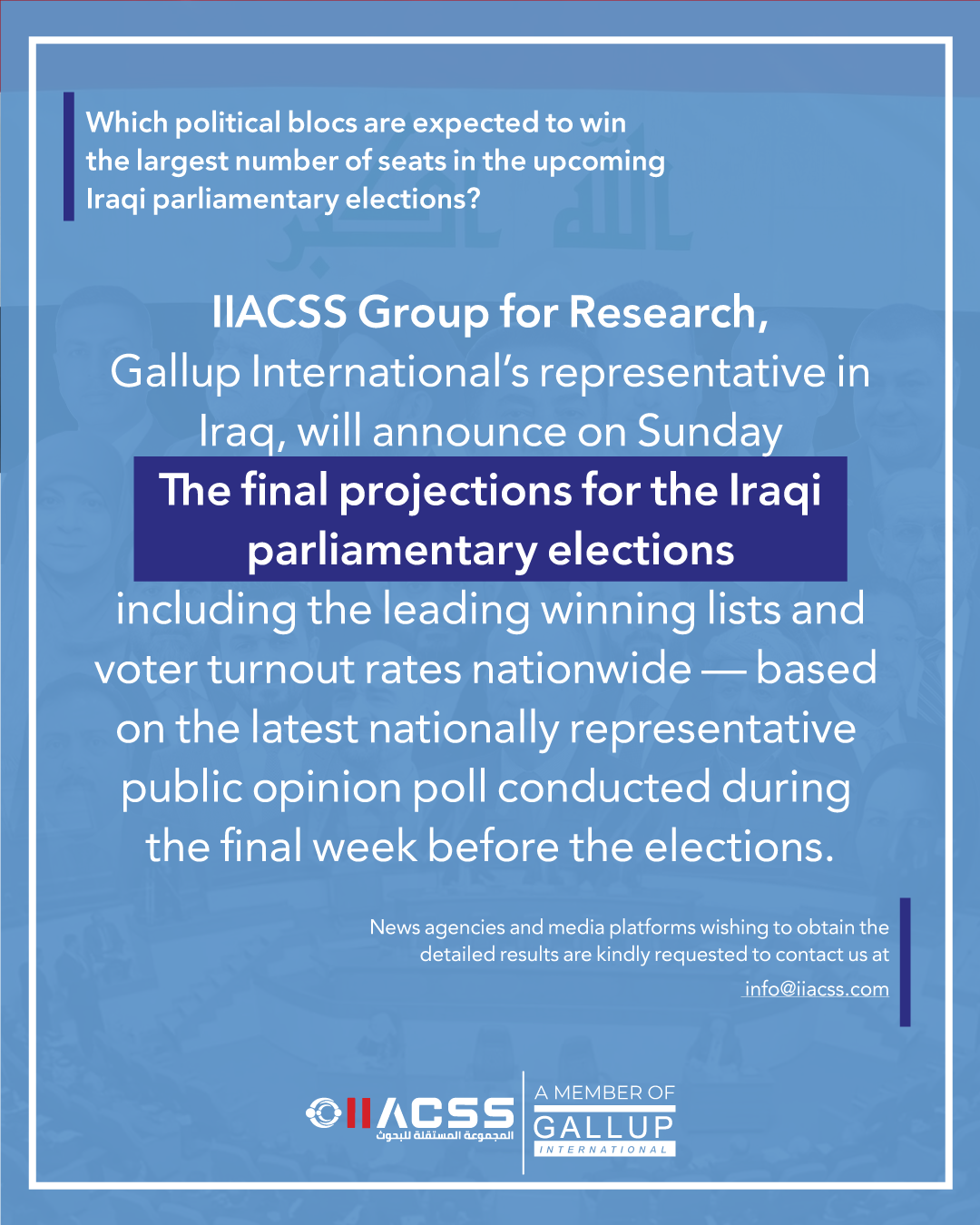Munqith Dagher and Karl Kaltenthaler
November 8, 2019
Iraq is witnessing protests that are shaking its political system to its core. The nationwide protests, which started on October 1, 2019, have been startling in their scope, their size, and the violent response with which the largely non-violent protestors have been met. But perhaps the most surprising aspect is the makeup of most of these protests, as it is Iraq’s Shia majority that is protesting its Shia-dominated government. These ongoing protests have raised an important question: why have so many of Iraq’s Shia turned on a government that seems to represent them?
In answering this question, one must first consider what citizens expect from a government. Governments are expected to help secure three primary needs for their citizens: security, sustenance, significance. The latter of these needs, which we can refer to as ‘significance,’ is the need that individuals have to feel that he or she matters and is respected by the government. The more people believe that their government is not providing the expected levels of these three fundamental elements of a functioning state, the more frustrated and potentially angry citizens can become.
Iraqi Shia have lost faith in their government because it has failed to meet their basic needs in any of these three categories. After the fall of Saddam Hussein and the rise of new governance models and largely Shi’a governance, life was supposed to improve substantially for Shia Iraqis. Shia, as the majority group in modern Iraq, have always believed it was logical that they should have the greatest say in Iraq’s governance. Instead, Iraq has historically been dominated by the Sunni Arab community, with this dynamic stretching back to Ottoman times. Thus, when Saddam Hussein fell from power, Shia Iraqis expected a long-awaited end to Sunni dominance and a proportional say in Iraqi politics.
Adding to this expectation was the fact that many young Shia took up arms against ISIS when it threatened to overtake Baghdad in 2014, with Shia militias ultimately playing a central role in the defeat of ISIS as a conventional fighting force in Iraq. Because of the sacrifices so many Shia have made to try to rid Iraq of the scourge of ISIS, they expected that their communities would be rewarded with better standards or living and higher status in Iraqi society. Instead, neither the post-Saddam governance nor military involvement has caused these expectations to materialize.
Thus, Shia, and to a lesser extent the Kurds, have been disappointed in their beliefs that a new, democratic Iraq would not only grant them a greater voice in politics but also improve their lives in tangible ways. Instead, rather than a new and better Iraq, Iraq’s new Shia-dominated political system has delivered a political system that is deeply riven by corruption, fails to treat the average Iraqi citizen with respect, and cannot provide basics services like clean water and electricity, much less education and healthcare. Adding to these frustrations is the reality of an economy in shambles and a very large portion of Shia youth unemployed.
These conditions did not happen overnight. And along with this deterioration, frustration and anger with these conditions has also been building over time. Public opinion data collected by Independent Institute for Administration and Civil Society Studies (IIACSS), an Iraqi polling firm, show this clearly. Whereas in 2012, 59 percent of Shia Iraqis had confidence in the Iraqi government to improve the situation in the country, only 40 percent of Shias held the same view in 2018. In contrast, 35 percent of Sunni Iraqis believed that the government could improve things in 2012, with this number actually increasing to 50 percent in 2018. These numbers demonstrate that while Sunni Iraqis have become more optimistic after the defeat of ISIS, Shia Iraqis are increasingly pessimistic about a political system that had promised so much but delivered so little.
Another excellent indicator of public sentiment is the self-reported level of satisfaction with one’s life. After the U.S. invasion of 2003, neither Shia nor Sunni Iraqis were very happy with their quality of life. However, by 2005, 66 percent of Shia reported that they were happy with their life—60 percent of Sunnis said the same thing. These numbers continued to increase; in 2009, 81 percent of Shia were happy with their lives and 65 percent of Sunnis reported happiness with life. However, the situation has since reversed. When asked in 2018, only 65 percent of Shia said they were happy with their life in a return to 2005 levels, and 75 percent of Sunnis were now reporting being happy about life. This trend question demonstrates how Shia have become more unhappy and pessimistic since the days when Iraq first began democratic elections.
Driving the increasing dissatisfaction with life among Iraq’s Shia is the dire economic and political situation they face. In 2004, the chief concerns among Iraqis were security, infrastructure, and unemployment, in that order. During this year, 72 percent of Shia said that security was their primary concern. However, corruption has proved the top concern in 2019, with 47 percent of respondents saying that this is their biggest problem, followed by 32 percent saying that unemployment is their primary concern, and 21 percent saying security is their top concern. With ISIS now reduced to a shadow of its former threat during the 2014-2015 period, Iraqis have now become increasingly angry about the political system’s inability to deliver clean governance or jobs.
However, recent events have also impacted the growth of the protests. Adding fuel to the fire of Shia anger at their government is the violent response that peaceful protestors have faced in the streets of Iraq’s cities. Since the protests started in October, approximately 300 protestors have been killed by government and pro-government forces, while over ten thousand have been wounded. The violence against the protestors has often been arbitrary or aimed at terrifying people from going into the streets. Widespread use of snipers employing live rounds against protestors who are not a threat to government forces or civilians is intensifying anger against the government. This heavy-handed use of force is driving more Iraqis into the streets against a government they believe does not respect them and no longer represents them.
Another target of Shia popular anger is Iran. Increasingly, Iraqi Shia have come to view Iran as interfering in Iraqi politics to their detriment. Moreover, Iran is seen as backing the current Iraqi government and the violent crackdown on dissent. Iranian-backed Iraqi Shia militias have played a central role in the violence against demonstrators and they are now the most solid backers of the present Iraqi government. However, this is not a new trend: unfavorable views toward Iran among Iraq’s Shia have grown substantially over the last five years. In 2014, 86 percent of Iraqi Shia had a favorable view of Iran, while in 2019, that percentage has dropped to just 41 percent.
So what do Iraqi Shia want? The protestors are demanding not just the immediate cessation of violence against them and the resignation of the current government, but for a fundamental change in the structure of the political system. While the post-2003 political system was designed to be inclusive and not leave any potential aggrieved sub-groups out of policy-making, it has led to very difficult government formation, policy paralysis, and encouraged patronage networks and corruption. Parliamentarians use their seats to leverage state coffers to ensure support among their political bases and enrich themselves. It is this rent-seeking behavior among the present Iraqi political class that has left so many of Iraq’s citizens angry at their politicians.
It may take great courage and a focus on national unity among Iraqi politicians to avert a disaster in the country. Unless this takes place, is not hard to imagine the anger among Iraq’s Shia majority leading to support for more extremist means to rectify the perceived untenable political situation in the country. As has been shown before, an unstable Iraq is not in the interest of Iraqis, the region, or the United States.


